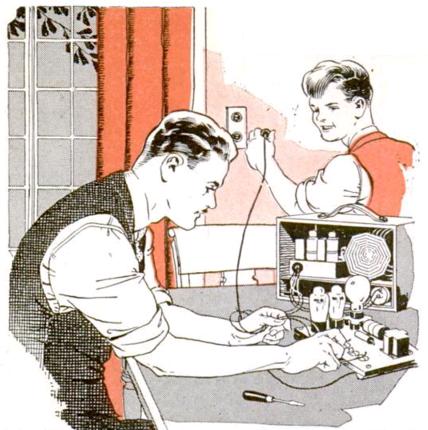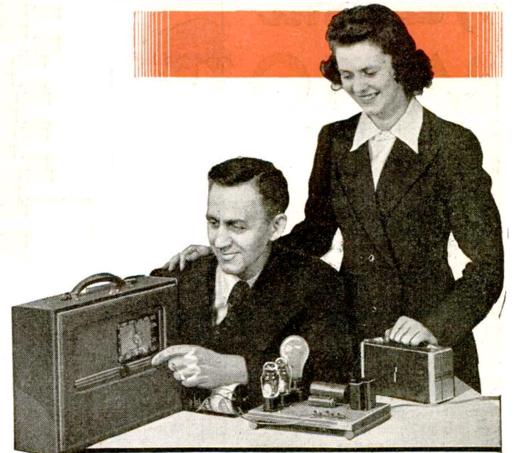Despite appearances to the contrary, Junior is not trying to do anything untoward, and it’s clear from the picture that the father’s fingers are safely on the low-voltage connections. What this wartime father and son are doing is getting their battery portable back in commission, despite the unavailability of B batteries due to the war.
They are working on an emergency power supply, following the plans contained in the August 1943 issue of Popular Mechanics.
Even though B batteries were unavailable due to the war, the perfectly good radio could be put back into operation thanks to this power supply, which could be assembled from noncritical materials found in the radio enthusiast’s junk box.
Two different diagrams were provided, adapted to the needs of the particular set. Rectification was accomplished by using one or more radio tubes. If triodes were used, the grid and plate were tied together. The filament voltage for those tubes was obtained by wiring them in series with one or more 60 watt light bulbs. For a filter choke, the secondary winding of an old audio transformer could be used. Two or three electrolytic capacitors were required for filtering. In addition, a couple of 1 watt resistors were used as a voltage divider for supplying the various voltages required by the radio.
The 1.4 volts for the filaments of the radio could be supplied by a flashlight battery, or two wired in parallel.
As shown below, despite wartime parts shortages, this ingenious device successfully brought an otherwise useless portable receiver back to life.
Click Here For Today’s Ripley’s Believe It Or Not Cartoon
![]()



The kid looks like he’s ready to electrocute dad!